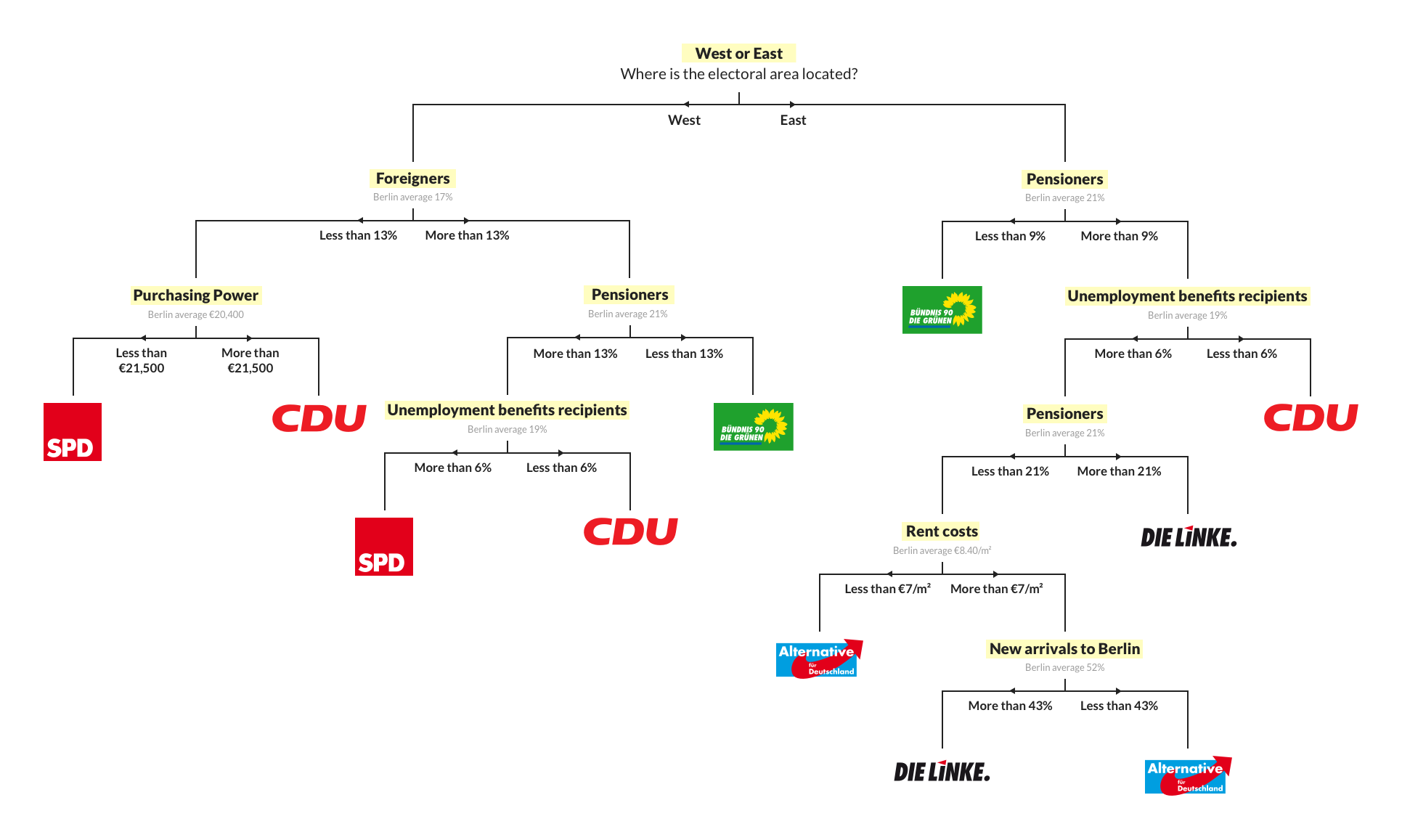
The proportion of foreigners living in the individual electoral areas where the right-wing populist party Alternative für Deutschland (AfD) won did not play a decisive role – however, the rents in these areas were way below the Berlin average. This was one of the findings of a Berliner Morgenpost computer generated analysis, based on machine learning. For this purpose, a model was fed with nine criteria relating to the voters’ social environment: age (proportion of pensioners), place of residence (East/West), proportion of unemployment benefits recipients, proportion of foreigners, proportion of residents with a migrant background, place of birth (Berliner or new arrival), rent costs, purchasing power and housing conditions.
The factors are presented on many levels as a decision tree, based upon the strength of the correlation with the election results. Criteria with little or no recognisable correlation were sorted out and discarded. For all parties now represented in parliament, the East or West location of the area was the most important factor in the decision path to victory. This clearly illustrates that, even 27 years after the fall of the Wall, Berlin is still a politically divided city.
In the case of the AfD, the path to victory led through the electoral areas of the former East, and through areas with a higher proportion of pensioners and recipients of unemployment benefits. Finally, the AfD was more likely to be voted for where the base rent per square metre was €7 or cheaper. In areas of Berlin with higher rents, the right-wing populists had better chances where, in comparison to the Berlin average of 52%, there were relatively few new arrivals (43% or lower).